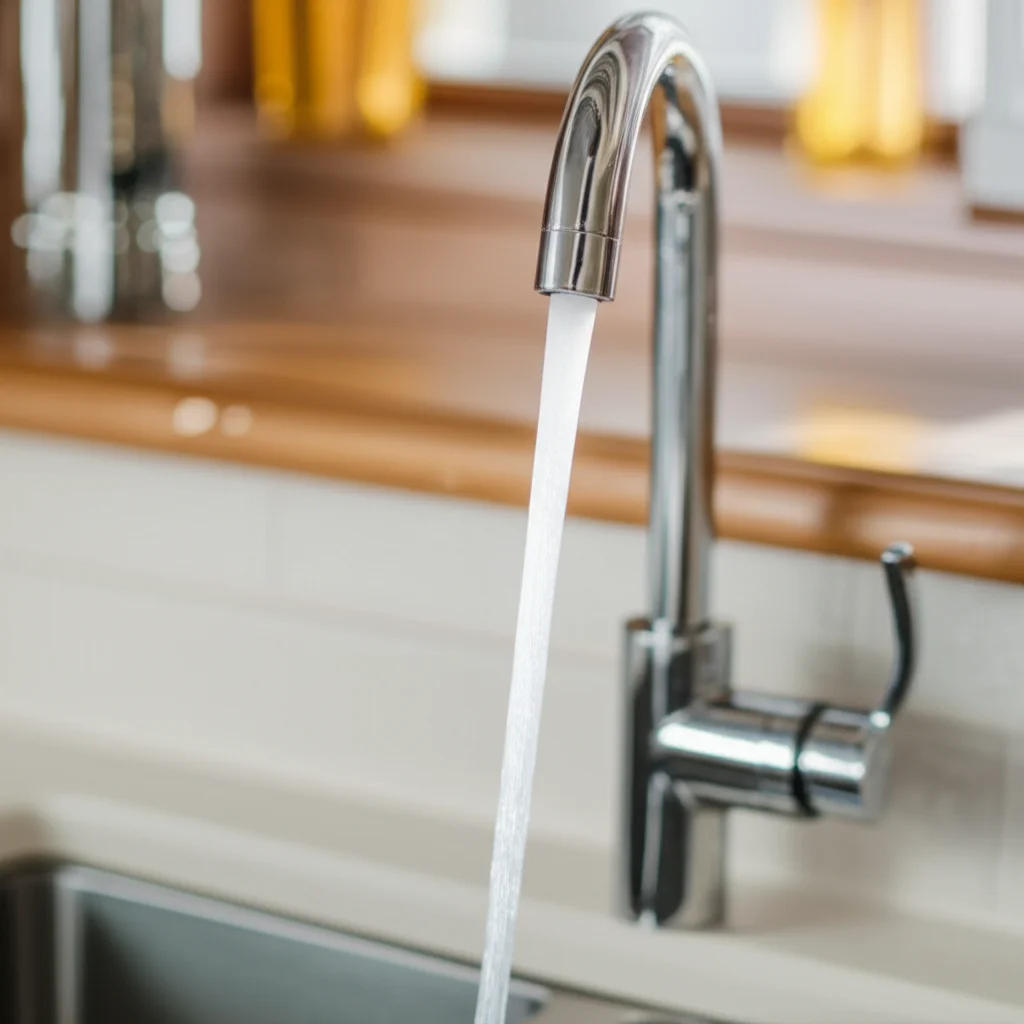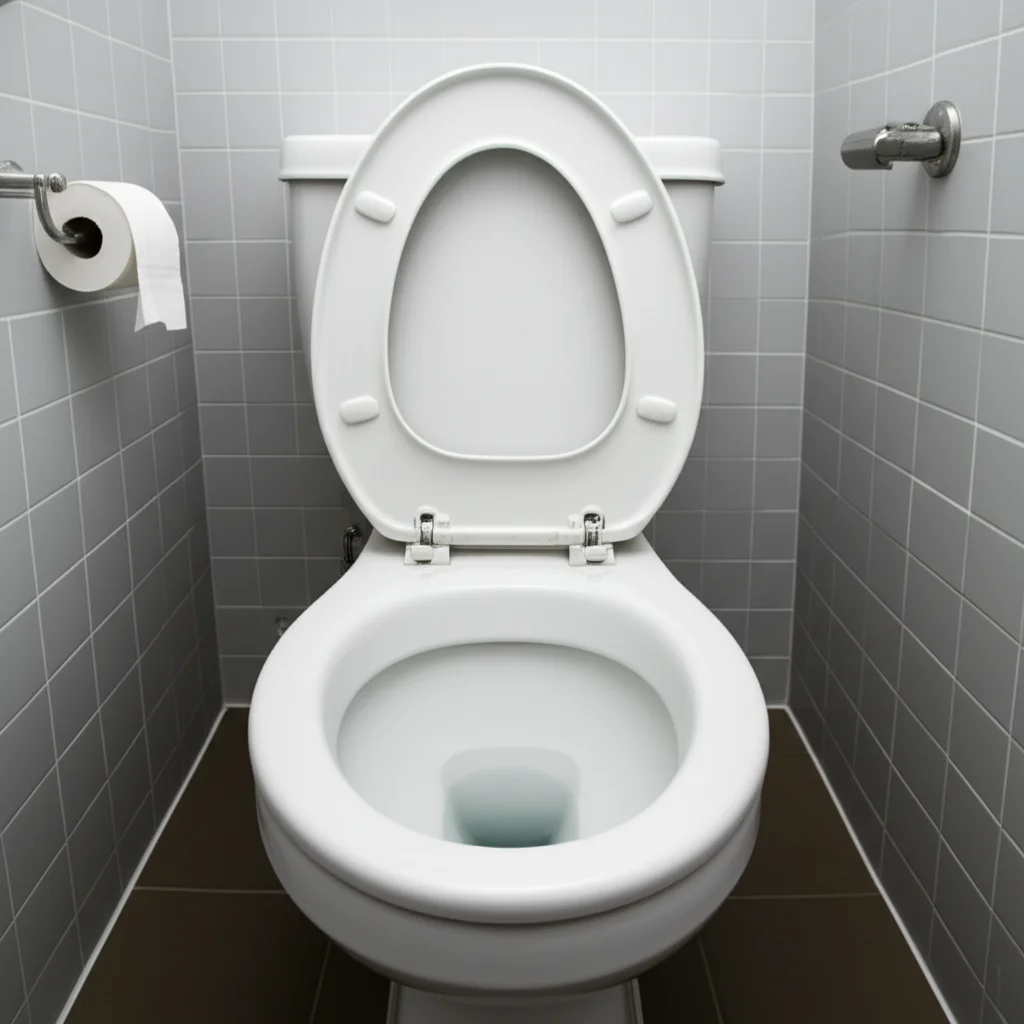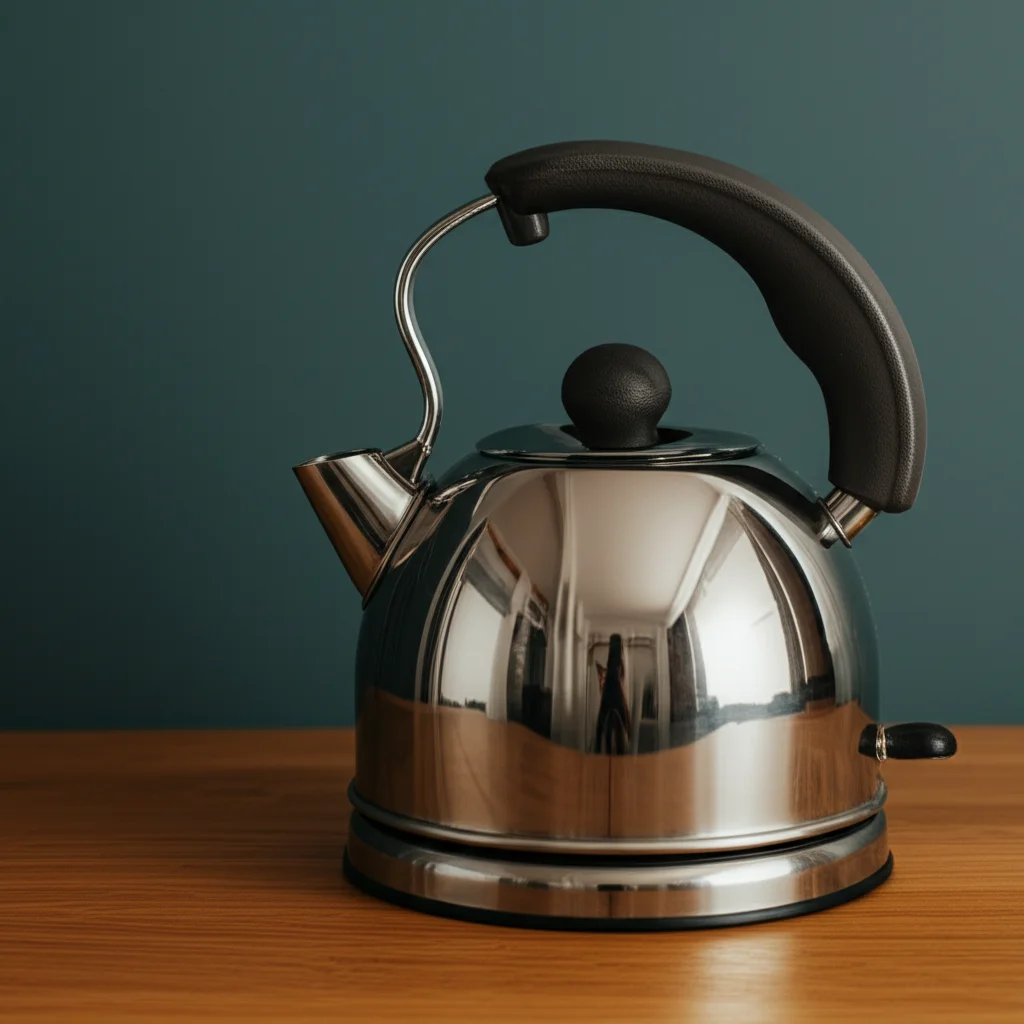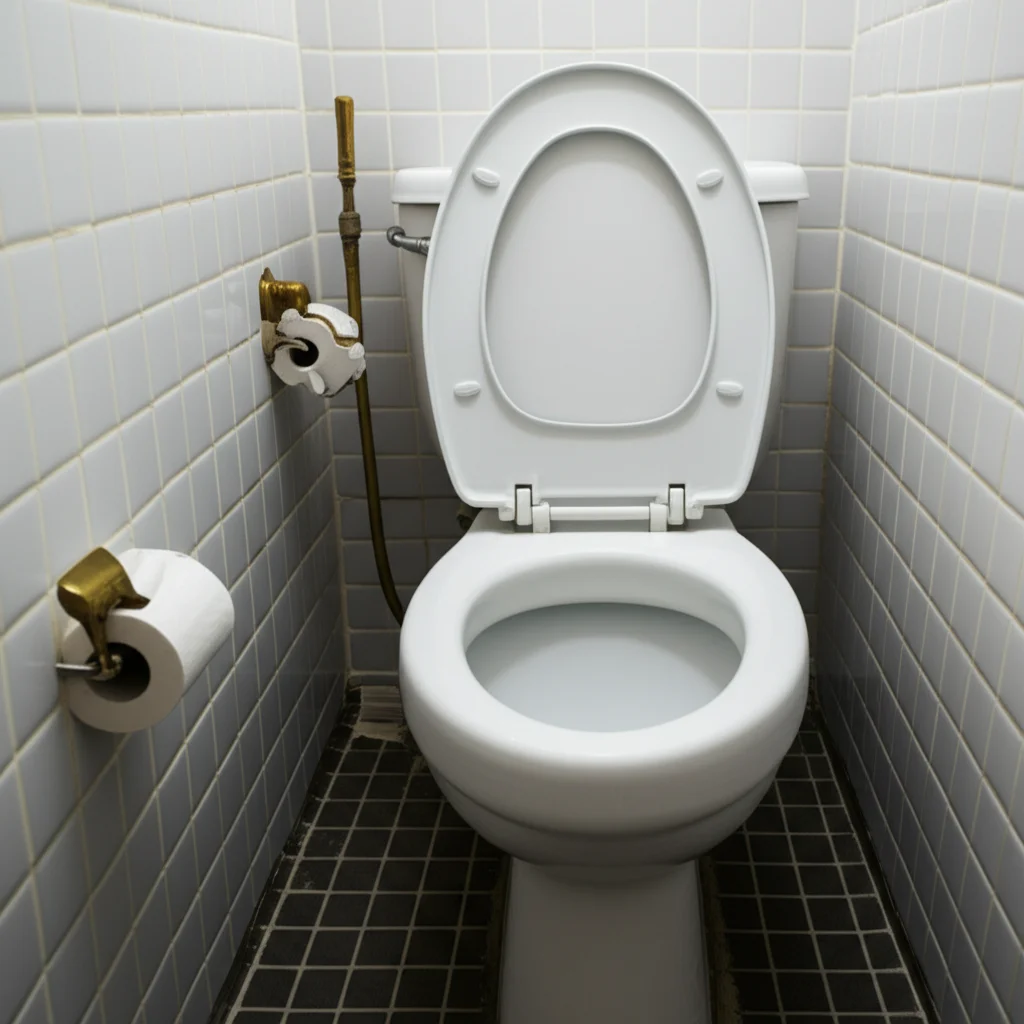· Todd Martin · Home Maintenance · 13 min read
How To Clean Calcium Buildup In Toilet
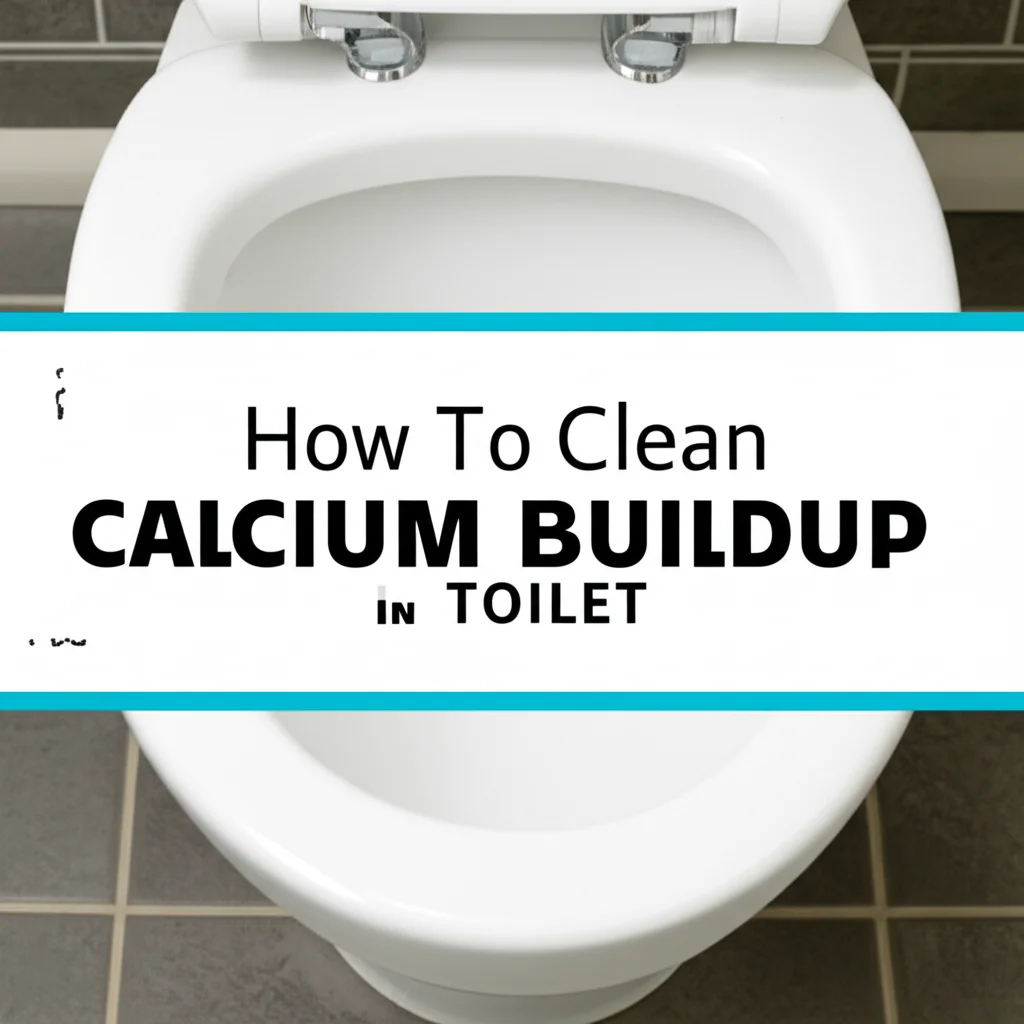
Clean Calcium Buildup in Your Toilet: A Simple Guide
Seeing stubborn stains in your toilet bowl can be frustrating. That unsightly white or yellowish crust often means you have calcium buildup. Hard water, common in many areas, leaves mineral deposits behind with every flush. These deposits cling to the porcelain, making your toilet look dirty no matter how often you clean.
I know how annoying it is to deal with these persistent stains. I have faced this problem many times in my own home. This article will show you effective ways to clean calcium buildup in your toilet. We will explore safe home remedies and stronger solutions. You will learn how to make your toilet sparkle again and keep those hard water stains away for good.
Takeaway
- Use acidic cleaners like white vinegar or citric acid for effective calcium removal.
- Combine baking soda with vinegar for a powerful fizzy reaction against stains.
- A pumice stone can safely scrub away stubborn deposits without scratching porcelain.
- Regular cleaning and preventative measures help keep calcium buildup at bay.
To clean calcium buildup in your toilet, first remove water from the bowl. Then, apply an acidic cleaning agent like white vinegar or a commercial cleaner to the affected areas. Allow it to soak for several hours or overnight. Finally, scrub vigorously with a toilet brush or pumice stone to dislodge the softened mineral deposits, then flush thoroughly.
Understanding Calcium Buildup: Why It Happens in Your Toilet
Calcium buildup, also known as limescale or hard water stains, forms when water with high mineral content evaporates. Your tap water contains dissolved minerals like calcium and magnesium. When water sits in the toilet bowl or splashes and dries on surfaces, these minerals are left behind. Over time, they accumulate into hard, crusty deposits.
These deposits commonly appear as a white, off-white, or yellowish ring around the waterline. They can also affect the toilet tank, the siphon jet hole, and under the rim. The rough surface of the mineral buildup traps dirt and grime, making the toilet look even worse. This constant accumulation not only makes your toilet unsightly but can also affect its flushing efficiency by partially blocking water jets. I have personally seen how quickly these stains can form, especially if you live in an area with particularly hard water. Ignoring these stains can make them harder to remove later.
Essential Supplies for Tackling Toilet Calcium
Before you start cleaning, gather the right tools and cleaning agents. Having everything ready makes the job easier and safer. I always make sure I have my safety gear on hand first. This protects my skin and eyes from cleaning chemicals.
You will need rubber gloves and eye protection. A sturdy toilet brush is a must for scrubbing. For tougher spots, a pumice stone designed for toilets can be very helpful. You might also need an old towel or sponge to remove water from the bowl.
For cleaning solutions, white vinegar is often the first choice due to its acidity and safety. Baking soda is excellent for combining with vinegar for a fizzy reaction. Citric acid powder is another effective natural option. For very heavy buildup, a specialized commercial toilet cleaner designed for hard water stains may be necessary. Always check the label of commercial products and use them in a well-ventilated area. I find that having a dedicated spray bottle for vinegar or a diluted solution is also handy for targeting specific areas. Remember, never mix different chemical cleaners, especially bleach and acids, as this can create dangerous fumes.
Step-by-Step Guide: Cleaning Calcium with Vinegar
White vinegar is an incredibly effective and safe solution for cleaning calcium buildup. Its acetic acid content helps dissolve mineral deposits without harming your toilet’s porcelain. I often start with vinegar for mild to moderate stains because it works so well. This method is budget-friendly and kind to the environment.
First, you need to reduce the water level in the toilet bowl. You can do this by turning off the water supply valve behind the toilet. Then, flush the toilet to drain most of the water. If some water remains, use an old cup or sponge to scoop it out. This allows the vinegar to directly contact the calcium buildup.
Next, pour at least 1-2 cups of undiluted white vinegar directly onto the calcium stains. Ensure the vinegar coats all affected areas, including under the rim if possible. For buildup around the waterline, you can soak paper towels in vinegar and press them onto the stains. Leave the vinegar to sit for several hours, or even overnight for stubborn deposits. The longer it soaks, the more time the acid has to break down the minerals. After soaking, scrub the stained areas vigorously with your toilet brush. You should see the calcium deposits starting to loosen and come off. Finally, turn the water supply back on and flush the toilet several times to rinse away the dissolved calcium and vinegar. For tips on general cleaning with these household items, you can explore how to clean with vinegar and baking soda.
The Power Duo: Baking Soda and Vinegar for Tough Stains
When vinegar alone is not quite enough, adding baking soda creates a powerful fizzing action that can dislodge tougher calcium stains. This combination is a classic for many household cleaning tasks. The chemical reaction between the acid (vinegar) and the base (baking soda) produces carbon dioxide gas. This gas creates bubbles that help lift and scrub away grime and mineral deposits. I find this method particularly satisfying to watch as the fizzing gets to work.
To use this method, first, reduce the water level in your toilet bowl as described before. Sprinkle a generous amount of baking soda directly onto the calcium buildup. Aim for about half a cup to a full cup, making sure it covers all the stained areas. Allow the baking soda to sit for about 15-30 minutes; this allows it to start reacting with any moisture present.
Next, slowly pour one to two cups of white vinegar over the baking soda. You will immediately see a fizzing reaction. This is the chemical process at work, loosening the calcium. Let this mixture sit and fizz for at least 30 minutes, or longer for more severe stains. After the soaking period, use your toilet brush to scrub the areas thoroughly. The softened calcium should come off much more easily. Flush the toilet several times to rinse the bowl clean. This method is also excellent for addressing other common toilet issues, such as cleaning the toilet tank with baking soda, which can also harbor mineral buildup. For general household applications, you might also find success using baking soda to clean showers.
Using Borax or Citric Acid for Persistent Calcium Buildup
Sometimes, vinegar and baking soda need a little help with truly persistent calcium buildup. Borax and citric acid are two excellent alternatives. Both are powerful mineral removers. They can tackle the stains that seem stuck on forever. I have used both of these when other methods were not quite enough.
Borax is a natural mineral compound. It has a high pH, making it alkaline, which helps to loosen tough grime. To use borax for calcium, first, remove as much water from the toilet bowl as possible. Sprinkle about half a cup of borax directly onto the calcium stains. Let it sit for at least an hour. For very stubborn stains, you can leave it overnight. After soaking, scrub the buildup with a toilet brush. The deposits should scrape away more easily. Flush the toilet to rinse the bowl.
Citric acid is another powerful natural acid, derived from citrus fruits. It is safe for porcelain and effective against minerals. You can buy it in powder form. Dissolve about 1/4 to 1/2 cup of citric acid powder in a cup of hot water to create a strong solution. Pour this solution directly onto the calcium buildup. For stains above the waterline, soak paper towels in the solution and press them onto the stains. Allow it to sit for several hours or overnight. Then, scrub vigorously with a toilet brush and flush. Both borax and citric acid are strong cleaners. Always wear gloves and ensure good ventilation when using them. They provide effective solutions for various tough cleaning challenges, including removing hard water off surfaces like windows.
When to Use a Pumice Stone and Commercial Cleaners
For calcium buildup that seems welded to the porcelain, a pumice stone or a strong commercial cleaner can be your last resort. These options are effective for very heavy deposits. However, they require careful use to avoid damage or safety issues. I reach for these tools only when other methods have failed.
A pumice stone is a gentle abrasive tool made from volcanic rock. It is hard enough to scrape off mineral deposits but soft enough not to scratch porcelain. To use a pumice stone, first, make sure both the stone and the toilet surface are wet. Never use a dry pumice stone on dry porcelain; this can scratch the bowl. Gently rub the pumice stone over the calcium buildup. Apply light pressure and let the stone do the work. The stone will wear down as you scrub, creating a paste that helps lift the stains. Keep checking your progress to ensure you are not scratching the surface. This method is incredibly effective for old, stubborn stains, making it a go-to choice for restoring a clean toilet bowl. You can find more detailed guidance on how to clean a toilet with a pumice stone.
Commercial toilet bowl cleaners specifically formulated for calcium or lime scale removal are also available. These often contain strong acids like hydrochloric acid or phosphoric acid. Read the product label carefully before use. Always wear rubber gloves and eye protection. Ensure the bathroom is well-ventilated by opening windows or using a fan. Pour the cleaner into the toilet bowl, directing it at the calcium deposits. Allow it to sit for the time recommended on the label, usually 10-15 minutes. Then, scrub with your toilet brush and flush thoroughly. Never mix these cleaners with other chemicals, especially bleach, as this can create dangerous and harmful fumes. For other tough stains like rust from a toilet bowl, commercial cleaners or strong acids can also be effective.
Preventing Future Calcium Buildup in Your Toilet
Once you have effectively cleaned calcium buildup from your toilet, the next step is prevention. Regular maintenance is key to keeping your toilet sparkling and free from future hard water stains. I have learned that a little effort consistently saves a lot of hard scrubbing later. Dealing with the source of hard water is also a significant step.
One of the simplest prevention methods is regular cleaning. Aim to clean your toilet bowl at least once a week with a mild toilet cleaner or a mixture of vinegar and water. A quick scrub can prevent minerals from accumulating and hardening. Flushing the toilet after each use helps too, especially if you have hard water, as it keeps water moving and reduces stagnant periods where minerals can settle.
Consider installing a water softener for your entire home if you live in an area with very hard water. A water softener removes minerals like calcium and magnesium before the water enters your plumbing system. This prevents buildup not just in your toilet, but also in pipes, faucets, and appliances. While a larger investment, it offers a long-term solution to hard water problems throughout your home. For example, if you have calcium buildup in your pipes, a water softener could address that too. Using toilet tank tablets designed to prevent mineral buildup can also be helpful, but be cautious with these. Some tablets contain harsh chemicals that can damage internal toilet components over time. Always choose products specifically labeled as safe for septic systems and internal parts. Regularly inspect your toilet for early signs of buildup, especially around the waterline and under the rim. Addressing small stains immediately will prevent them from becoming large, tough deposits.
FAQ Section
Can Coca-Cola clean calcium buildup in toilets?
Yes, Coca-Cola can help clean calcium buildup in toilets. It contains phosphoric acid, which is a mild acid that can dissolve mineral deposits. Pour a can of Coke directly onto the stains, let it sit for a few hours or overnight, then scrub and flush. While effective for light stains, it is not as powerful as vinegar or dedicated cleaners. For more intense cleaning methods using common household items, you can also learn how to clean toilet bowl stains with Coke.
Is it safe to leave vinegar in the toilet overnight?
Yes, it is generally safe to leave white vinegar in the toilet overnight. Vinegar is a mild acid and will not harm porcelain or typical toilet components. In fact, leaving it overnight allows the acid more time to dissolve stubborn calcium deposits. This prolonged soaking often leads to better cleaning results, especially for heavy buildup. Just make sure the toilet is not used during this time.
How often should I clean calcium from my toilet?
The frequency depends on your water hardness. For areas with very hard water, I recommend a light cleaning with vinegar or a mild cleaner once a week. This prevents significant buildup. For moderate water hardness, a thorough cleaning every two to four weeks might be enough. Regular vigilance and addressing new stains quickly will minimize the need for intense cleaning sessions.
Will bleach remove calcium buildup?
No, bleach does not effectively remove calcium buildup. Bleach is a disinfectant and stain remover, but it does not dissolve mineral deposits like calcium or limescale. In fact, using bleach on calcium stains can sometimes make them appear worse by oxidizing organic matter around the minerals, leaving the white calcium still visible. For calcium, you need an acidic cleaner.
What if the buildup is in the siphon jet hole?
Calcium buildup in the siphon jet hole can affect flushing efficiency. To clean it, turn off the water and drain the bowl. Use a small brush, a straightened paper clip, or a small screwdriver to carefully dislodge visible deposits from the jet holes under the rim. Then, pour vinegar into the overflow tube or directly into the bowl to soak the area overnight, followed by scrubbing and flushing. This also helps with issues like cleaning the toilet siphon jet hole.
Conclusion
Cleaning calcium buildup in your toilet does not have to be a daunting task. By understanding the causes and employing the right methods, you can easily restore your toilet’s pristine appearance. We have covered effective strategies, from the power of white vinegar and baking soda to the focused action of a pumice stone. Each method offers a solution depending on the severity of your hard water stains.
Remember, consistency is key in maintaining a clean toilet. Regular cleaning prevents mineral deposits from hardening, making future cleanups much simpler. Whether you choose natural remedies or specialized commercial cleaners, always prioritize safety and proper ventilation. A clean toilet is a sign of a well-maintained home. Embrace these cleaning techniques to keep your toilet bowl sparkling and fresh. You will love the results of a calcium-free toilet.


